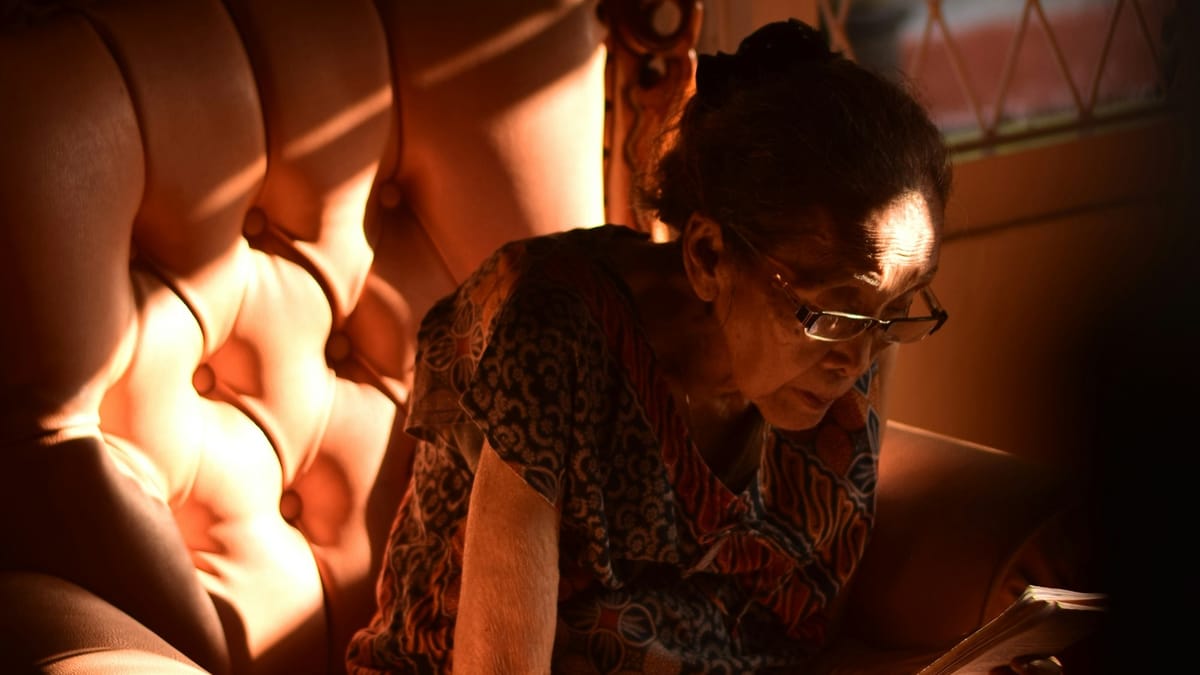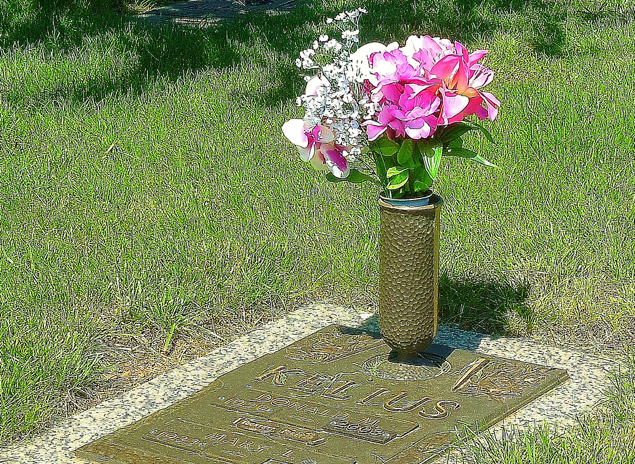Can Hospice Tell When Death is Near?
Can hospice tell when death is near? Learn how experienced hospice professionals assess physical, emotional, and spiritual changes to provide guidance and comfort during the end-of-life journey. Understand the signs and what they mean, offering reassurance to loved ones in this critical time.

Hospice Care: What is it?
Hospice care is a specialized form of end-of-life care for those who are terminally ill. It is a holistic approach designed to provide physical, emotional, and spiritual support to those in their final days, weeks, and months. Hospice care focuses on making the patient as comfortable as possible physically, mentally, and spiritually, while also providing support and comfort to their families.
Understanding the dying process is crucial, and the hospice foundation plays a significant role in this by emphasizing the importance of research and communication with patients, even in states of unconsciousness.
It is a team-based approach that involves physicians, nurses, counselors, social workers, chaplains, and volunteers. Hospice professionals are experts in the challenges of caring for someone in their last stages of life. They understand the delicate nature of this process, and provide the compassionate support needed during this difficult time.
The goal of hospice care is to improve quality of life for terminally ill patients by providing comfort and compassion. This is done by managing pain and other symptoms, responding to emotional and spiritual needs, and providing the resources and support necessary for patients and their loved ones.
Hospice care can be provided in the patient’s home, assisted living facility, or hospital. It is often covered by health insurance, including Medicare and Medicaid, so it does not have to come out of pocket. Hospice care is available for anyone facing a terminal illness, regardless of age, gender, or religion.
Hospice care is a wonderful way for terminally ill people to live the remainder of their lives with dignity, comfort, and peace. It is an amazing gift to both the patient and their family, and one that will be remembered long after the patient has passed.
Understanding the Dying Process
The dying process is a natural part of life, and understanding what to expect can help family members provide the necessary support and comfort. This process can vary significantly from person to person, lasting from weeks to mere hours, influenced by the individual’s illness and medications. As death approaches, patients may exhibit common signs and symptoms, such as changes in breathing patterns, skin color, and vital signs like blood pressure and body temperature. Recognizing these physical and emotional changes can help family members and caregivers offer the appropriate care and emotional support during this challenging time.
Signs of Approaching Death
Death is often hard to predict. While medical professionals may have an understanding of the general timeline, predicting an exact moment in time is difficult. Recognizing end of life signs, such as specific symptoms associated with approaching death, is crucial for providing comfort and support. Hospice caregivers are usually the first to be able to detect these signs that death is near.
The physical signs that will begin to appear usually include:
- A gradual or sudden decline in eating and drinking.
- Increased sleep (days and nights).
- Abnormal breathing patterns.
- Fading away or loss of responsiveness.
- Changes in body temperature.
- Moderate to extreme pain.
- Skin changes such as a decrease in elasticity and a coolness to the touch.
These symptoms can vary from patient to patient, but they usually indicate that death is near. It’s important to note that death can occur suddenly, even if the patient has not shown any physical signs that it is approaching. In such cases, hospice caregivers can still help provide comfort and support.
Role of Hospice Care Givers in Estimating Time of Death
Hospice care givers play an important role in determining when death is near. These highly trained professionals, including the hospice nurse, provide invaluable services to the terminally ill and their families during this difficult time. The hospice team is trained to assess the physical condition of the patient, update care plans, and provide comprehensive support to gauge when death is imminent.
A hospice care giver will use all of their senses to assess the condition of the patient. This includes sight, sound, touch, as well as their intuitive knowing. They will observe the patient’s physical condition as well as their behavior and interactions with family members. They may also have conversations with the family to better understand their situation.
The hospice care giver will also take into consideration the patient’s vital signs such as heart rate, respiration rate, oxygen saturation levels, and other medical data that may be available.
Once the hospice care giver has evaluated all of these factors, they may then be able to give an estimate as to when the patient may pass away. It is important to note, however, that the estimation of the exact date or even time of death is impossible. While a hospice care giver can make an educated guess, their estimate is ultimately just that: an educated guess.
Hospice care givers are also integral in providing comfort and support to both the dying and their families. They understand how difficult this time can be, and they do their best to provide compassionate care. They will help to make sure the patient feels comfortable during their final moments, and offer emotional support to the family throughout the entire process.
Hospice care givers provide invaluable support during this complicated time. It is important to remember that hospice care is an end-of-life care option; it does not provide any cures or extend the life of the patient. However, it does provide comfort, support, and peace of mind to the terminally ill and their families.

Providing Comfort and Care
Providing comfort and care to a dying person is crucial in ensuring their physical, emotional, and spiritual needs are met. Hospice care is a specialized form of care that focuses on providing comfort and quality of life for patients with terminal illnesses. Often provided in the patient’s home, hospice care can also be administered in assisted living facilities or hospitals. The primary goal of hospice care is to support and comfort patients and their families, helping them navigate the end-of-life journey with dignity and peace.
Hospice care teams, including hospice nurses, play a vital role in this process. They provide emotional support, pain relief, and palliative care to patients, ensuring their comfort during their final days. Additionally, they offer guidance and support to family caregivers, helping them manage their loved one’s care and their own emotional and physical needs. Family members can also provide comfort by being present, listening, and offering emotional support, creating a loving and supportive environment for the dying person.
Using Technology to Monitor Vital Signs
As advances in technology have increased, so too has the ability to monitor vital signs and indicators of a patient approaching death. In hospice care, medical technology can be used to detect small changes in a patient's condition as death is neared.
From heartbeat and respiration monitors to pulse oximetry, hospice care givers are able to know when a patient is in a critical state. Additionally, technological applications such as sleep monitoring can provide valuable insight into the quality and quantity of sleep the patient is getting.
In addition to monitoring vital signs, newer technologies such as electronic medical records help hospice care givers provide the best quality of care possible. These records provide all caregivers with up-to-date and accurate information about the patient, reducing the time needed to make decisions.
Finally, video conferencing and telemedicine allow hospice staff to interact with patients remotely, while still providing the best quality of care. This allows care givers to monitor a patient's condition from a distance, enabling them to detect changes quickly and respond accordingly.
Understanding Judicial Precedents Regarding Hospice Care and Estimating Time of Death
When it comes to hospice care, there have been a few major judicial precedents set by the courts. These cases have raised important questions and considerations for healthcare professionals and families when it comes to determining and estimating a time of death.
One of the most ""notable"" court cases was that of Estate of Abeline Dineen. It was argued that the hospice workers had failed to accurately predict the timing of death and had used subjective evidence to do so. The result of this case was that hospice workers and medical professionals must use objective standards when estimating the time of death. This means that estimates of death cannot be based on subjective judgment, such as a doctor guessing how long a patient might live based on their physical condition.
Another important court case was Darling v. Charters. This case set an important precedent about physician's predicting a patient's life expectancy on death certificates. The court ruled that predicting a patient's life expectancy on a death certificate is medical malpractice. Therefore, medical professionals must carefully consider the circumstances of the patient before estimating the time of death.
These two court cases are important in terms of the legal precedents they have set for hospice care and the estimation of time of death. By understanding the legal context of these cases, families and hospice care professionals can be prepared for the ethical and legal issues that may arise when determining when death is near.

Spiritual, Emotional & End of Life Signs of Approaching Death
As one’s health deteriorates and death draws near, people may start to display physical symptoms, along with spiritual and emotional signs, signaling that the end of life is imminent. These signs can be tricky to recognize since they are highly individualized.
One of the most common spiritual changes commonly seen in those approaching death is a desire for increased privacy and solitude. Many people have been known to withdraw from social contact, wanting to spend more and more time alone in preparation for their transition from this world.
Another prominent spiritual sign is an increase in spiritual conversations or questions about life after death. It is not unusual for a person facing death to become much more introspective, reflecting on the meaning of their life and how they will be remembered.
Emotionally, those approaching death may start to display signs of acceptance, even embracing their impending death and preparing for what is to come. In addition, many people have also been known to express a heightened sense of peace and comfort as their end nears.
Finally, for both spiritual and emotional signs, it is common to observe a shift towards greater forgiveness and gratitude. It is not uncommon for one at the end of their life to start to forgive those who have hurt them and to express appreciation for all the good things they experienced during their lifetime.
The Five Tasks of Dying
The five tasks of dying, as identified by Dr. Ira Byock, are essential for individuals to complete as they near the end of their life. These tasks include:
- Reconciling: Making amends and resolving conflicts with loved ones, which can bring a sense of peace and closure.
- Forgiving: Letting go of grudges and forgiving oneself and others, which can alleviate emotional burdens.
- Expressing gratitude: Showing appreciation for the people and experiences in one’s life, fostering a sense of fulfillment.
- Saying goodbye: Acknowledging the end of life and saying goodbye to loved ones, providing a chance for final connections.
- Tying up loose ends: Completing any unfinished business and making final arrangements, ensuring that everything is in order.
Completing these tasks can help individuals die in a way that is meaningful and fulfilling, and can also help family members and caregivers support their loved one during this time. By understanding the five tasks of dying, individuals and their loved ones can prepare for the end of life, finding closure and peace in the process.
Common Practices of Patients and Family Caregivers
It is not uncommon for family members or those close to a terminally ill patient to undergo certain rituals or practices in the face of impending death. Often, this can be an act of closure or reflection upon the life and memories shared with the patient. Some common practices that families and patients may find comfort in include:
- Hosting a final gathering or ‘celebration of life’ for the patient.
- Writing final letters and making audio recordings to be shared with loved ones.
- Sharing special moments together such as listening to a favorite song, enjoying a favorite meal, or visiting a favorite place.
- Asking for a blessing or for forgiveness from the patient.
- Engaging in meaningful conversations and reminiscing over fond memories.
Additionally, providing comfort care items like lip balm can help maintain good oral hygiene and prevent chapping of the lips, especially when appetite declines and swallowing becomes problematic.
These practices can provide reassurance and create a sense of peace for both the patient and their families. Although these activities are quite common, everyone should follow their own beliefs and express themselves in the way that best suits their situation.
Conclusion It is natural to feel overwhelmed when considering the prospect of someone’s death. Although it is a difficult time, hospice care can provide much needed comfort and support for everyone involved. This guide has provided an overview of hospice care and the signs that indicate when death may be near.
Hospice care givers use a variety of tools to assess a patient’s condition in order to determine when death may be close. They are also mindful of the physical, spiritual and emotional signs which can help them predict the time of death. Families can also prepare for the end of life by having conversations, expressing love and making special memories.
Technology is playing a larger role in hospice care by monitoring vital signs and providing a better picture for caregivers. Recent legal precedents have also provided clarification on factors like end-of-life decisions, assisted suicide and other related aspects of hospice care.
Question/Answer: When can hospice tell when death is near?
When a patient is receiving end-of-life care from a hospice provider, it can be a difficult time for both the patient and their loved ones. It can be especially hard to know when the patient's death is drawing near. While no one can predict the exact moment someone will pass away, hospice care providers are trained to recognize signs that suggest death is approaching.
Common physical signs of impending death include a decrease in eating and drinking, lack of movement, difficulty speaking, and changes in breathing, as well as a general feeling of weakness. However, there are also spiritual and emotional indicators that can signal the nearness of death, such as a peaceful state, expressing a desire to “go home”, or a need to say goodbye to loved ones.
Hospice care providers are experienced in recognizing these subtle signs and can offer support and guidance to both the patient and their family. Technology can also provide valuable insight into when death is approaching. Continuous monitoring devices can track vital signs, alerting care providers when death is near.

Updates in the Field of Hospice Care
Recent years have seen a lot of progress in the field of hospice care. Advancements in technology have greatly improved the ability of healthcare providers to monitor the vital signs of their patients and predict when death is near. Clinics now use specialized technology such as pulse oximeters that can detect drops in blood oxygen levels, which can be an indicator of death being close.
Courts have also been busy in establishing legal precedents on how hospice care should be administered. Countries across the world are now recognizing more rights to the patient, which includes a say in the management of their own healthcare.
In addition, there has been an increased focus on humanizing the entire process of death. Family members and friends are encouraged to find ways to make the last few days of life meaningful for their loved ones. This can include spending time reminiscing with them, or engaging in activities they enjoyed.
You might also like this article:













